Opinion & Analysis
The media day experience: Rocket Mortgage Classic
As a golfer, being in golf media has some perks. You (sometimes) get CIA-level clearance to OEM research and development areas, you get to be around and talk golf with like-minded people all the time (unlike Club Pro Guy, I want to hear about your 87), and in some cases, you actually get to play some golf FOR WORK!
This week, I and a couple of other members of the WRX team (Johnny Wunder and Brian Knudson) traveled to the Detroit Golf Club to experience the Rocket Mortgage Classic Media Day. The experience of a media day is generally along the lines of a meal, some PR, interviews with the sponsor CEO or a rep, and then some golf. This event followed those lines but included a couple of cool announcements to go along with the proceedings.
Charity Work
The one thing I can’t stress enough is that no matter the tournament big or small, there is a huge charity component that gives millions of dollars EVERY week to local organizations, from the First Tee, to other completely non-golf related charities. Each and every event on the PGA Tour is a benefit to the community. And the Rocket Mortgage Classic (RMC) is no exception.
There is one cool conceptual addition to this event and that is “Zone 313” (a reference to the Detroit area code). It involves holes 14 (a 515-yard par 5), 15 (a 155-yard par 3), and 16 (a 400-yard par 4). If culminating over all the rounds played a player makes an eagle, a hole in one, and a birdie, then $313, 000 additional dollars will be donated ($200,000 to the player’s charity of choice, and $113,000 to another local partner). Based on the length PGA Tour players hit the ball the deciding factor is going to be someone making a hole in one, so keep an eye out for this during tournament week because it’s going to mean extra green for some special organizations.
The Course
The Detroit Golf Club North Course (DGC has 36 holes) is a Donald Ross gem that has some of the trickiest greens I have ever played. The course as a whole is beautiful, with tree-lined fairways (not too tree-lined to be claustrophobic), bunkers that are hidden behind perfect mounding and challenging decision making hitting into greens.
Missing fairways will lead to bogeys, but based on the length of the course, I’ll state the obvious: The greens are going to be the only defense. With our amateur games, we expect the winning score to be around 20 under par on this 7,000-yard par 72. During the press conference, it was mentioned that there was the option to make two of the par 5s into 4s based on length, but if you think about par as just an objective construct (that’s an Andy Johnson from the Fired Egg take), then either way, who cares?!?! The world’s best players playing a classic architectural gem is going to make for a great tournament either way.
To get a better idea of how some of the players might handle the course, see our video below detailing some of the key holes and an explanation of Zone 313.
- LIKE5
- LEGIT1
- WOW1
- LOL2
- IDHT0
- FLOP0
- OB0
- SHANK1
Opinion & Analysis
The 22 players who can win the Masters
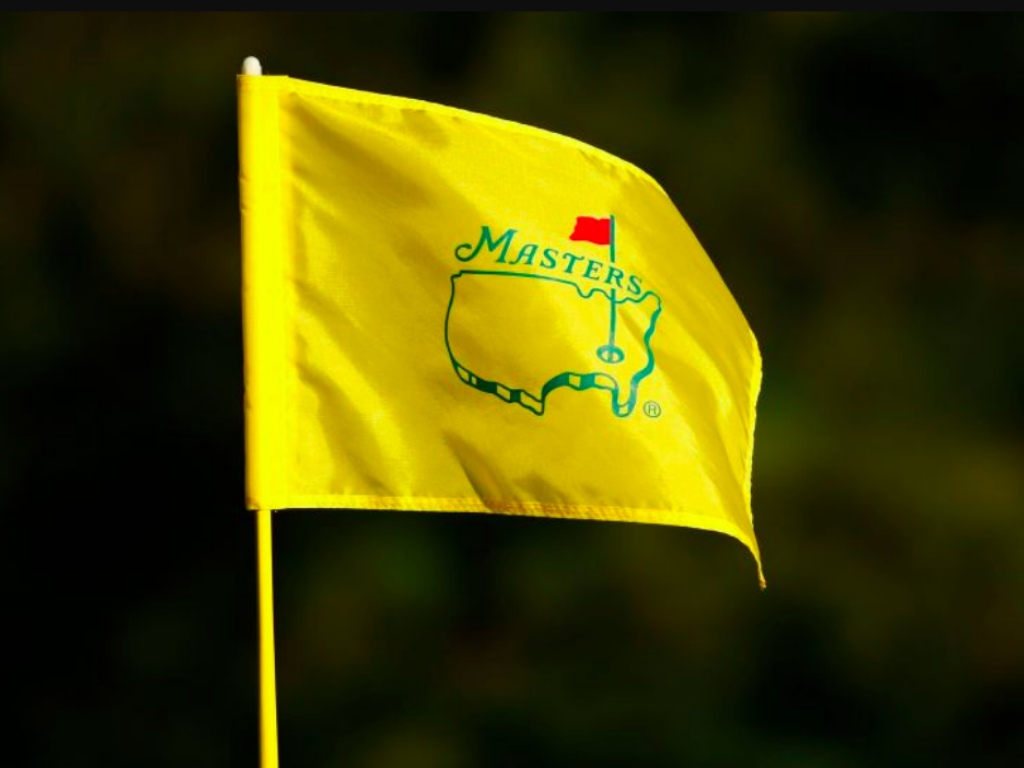
Since 2013, I have created a filtering process to help determine the players who are most likely to win the green jacket based on criteria that have strongly predictive outcomes to success at Augusta. The list of players that can win at Augusta is usually filtered down to 20-24 players and in that time I have correctly shortlisted every Masters champion.
This includes last year’s winner, Jon Rahm. Even though Rahm essentially walked away with the green jack and did not make it very close, there were some close calls on top of the leaderboard as I had filtered out Phil Mickelson (t-2nd) and Patrick Reed (t-4th) as the LIV Tour is still behind on providing advanced analytics for their tour. Russell Henley was also filtered out and finished t-4th, five strokes from Rahm’s winning score of 276.
If you’re watching at home, the “critical holes” that will likely determine the top finishers will be holes No. 7, 8, 11 and 13. The 11th hole is projected to be the most critical of holes as over the past five Masters the top players have gained nearly a 1.5 strokes for the tournament on that hole alone.
Just like last year’s column I will get the LIV Tour players I’ve filtered out of the way. Since LIV Tour does not provide ShotLink or Trackman data, it’s more of a guessing game as to how certain LIV Tour golfers are playing. I did utilize recent performance as well as performance at Mayakoba and Doral as they were two former PGA Tour courses that have some semblance of crossover to playing Augusta.
Phil Mickelson
Thorbjorn Olesen
Charl Schwartzel
Cameron Smith
Bubba Watson
Admittedly Cameron Smith and Phil Mickelson are hard to leave out, but both have not played well as of late.
Next, I filtered out the amateurs and all first-time professional attendees. The Masters has only been won three times by a first-time attendee: Fuzzy Zoeller was the last to win in 1979. Prior to Zoeller though, it was Horton Smith in the inaugural event in 1934 followed by Gene Sarazen in 1935
Ludvig Aberg
Akshay Bhatia
Wyndham Clark
Eric Cole
Santiago de la Fuente (a)
Nick Dunlap
Austin Eckroat
Stewart Hagestad (a)
Ryo Hisatsune
Lee Hodges
Nicolai Hojgaard
Stephan Jaeger
Jake Knapp
Christo Lamprecht (a)
Peter Malnati
Denny McCarthy
Grayson Murray
Matthieu Pavon
Adam Schenk
Neal Shipley (a)
Jasper Stubbs (a)
Out of the first time invitees the data likes Ludvig Aberg and Eric Cole to play the best at Augusta National.
I also filter out old Masters champions that I do not believe can get into contention anymore.
Fred Couples
Jose Maria Olazabal
Vijay Singh
Mike Weir
Tiger Woods
Recency has a strong predictive value for player performance and missing the cut in the event in the prior week greatly reduces the likelihood of winning the following week compared to players that miss the cut, take a week off, and then play the following week. Therefore I filter out all players that missed the cut at the Valero Texas Open last week.
Byeong Hun An
Harris English
Rickie Fowler
Ryan Fox
Zach Johnson
Tom Kim
Erik van Rooyen
Camilo Villegas
I will also filter out the players that have never made the cut at the Masters:
Kurt Kitayama
Adrian Meronk
A Tradition Unlike Any Other…
Augusta National has traditionally favored longer hitters and even moreso in the past 20 years of the event. Of course there has been exceptions as in 2007 the short hitting Zach Johnson ended up winning the event.
Critics of my filtering system point out Johnson’s victory as a case for short hitters being able to win at Augusta, but they neglect the fact that Johnson’s victory came in historically low temperatures in the 40’s with wind gusts reaching 35 mph. That made the par-5’s almost unreachable in two shots and the course stressed wedge play and short game around the green where Zach had a sizable advantage.
It is projected to rain early on Thursday and then the weather is supposed to be sunny and warm for the rest of the week. It depends on how quickly the course dries up, but if it does dry out fairly quickly that will give the longer hitters the advantage as they will be able to reach certain par-5’s in two shots that the shorter hitters cannot reach if they don’t hit a quality tee shot and there may be par-5’s that some of the long hitters can reach in two shots with a short iron. Therefore I will filter out the following players due to a lack of distance off the tee:
Corey Conners
Lucas Glover
Emiliano Grillo
Brian Harman
Si Woo Kim
Chris Kirk
Shane Lowry
Colin Morikawa
JT Poston
Justin Rose
Sepp Straka
Out of these players the data likes Lowry and Morikawa the most. Both have good history at Augusta and they both just narrowly missed the distance benchmark set in the filter and both are excellent long iron players.
Last year I created a new formula to better determine ball height as Augusta has historically not taken too kindly to a low ball flight. Out of the 5 players filtered out for low ball flight using the new formula the best finish was only t-29th by Si Woo Kim. This year I’ve filtered out the following players.
Matthew Fitzpatrick
Sungjae Im
Luke List
Joaquin Niemann
Justin Thomas
Every year I filter out the poor performers on approach shots from 175-225 yards as Augusta National puts a lot of stress on those shots. Last year I filtered out nine players and three of them missed the cut with only Jordan Spieth finishing in the top-15 (t-4th) as the rest of the players were never a threat.
Here are the golfers I’m filtering out due to poor play from 175-225 yards:
Patrick Cantlay
Cameron Davis
Jason Day
Tommy Fleetwood
Russell Henley
Max Homa
Rory McIlroy
Jordan Spieth
Nick Taylor
Rory had a nice outing at the Valero Texas Open and hit his irons better there, but appears to be struggling with a leftward miss. Other than that, Rory still has the game to win his first green jacket. Henley is usually one of the better iron players on Tour, but he has struggled this season from 175-225 yards and is a short hitter anyway.
I will also filter out Danny Willett as he is coming off injury and making his comeback at the Masters.
That leaves the 22 players that can win the Masters:
Keegan Bradley (150/1)
Sam Burns (60/1)
Bryson DeChambeau (25/1)
Tony Finau (50/1)
Sergio Garcia (100/1)
Adam Hadwin (175/1)
Tyrrell Hatton (80/1)
Viktor Hovland (35/1)
Dustin Johnson (40/1)
Brooks Koepka (16/1)
Min Woo Lee (70/1)
Hideki Matsuyama (20/1)
Taylor Moore (300/1)
Jon Rahm (12/1)
Patrick Reed (80/1)
Xander Schauffele (18/1)
Scottie Scheffler (4/1)
Adam Scott (100/1)
Sahith Theegala (50/1)
Gary Woodland (250/1)
Cameron Young (50/1)
Will Zalatoris (35/1)
Here’s my personal top-10 picks:
Keegan Bradley (150/1)
Sam Burns (60/1)
Bryson DeChambeau (35/1)
Tony Finau (50/1)
Viktor Hovland (35/1)
Dustin Johnson (40/1)
Hideki Matsuyama (20/1)
Jon Rahm (12/1)
Xander Schauffele (18/1)
Scottie Scheffler (4/1)
- LIKE0
- LEGIT0
- WOW0
- LOL0
- IDHT0
- FLOP0
- OB0
- SHANK0
News
7 PGA TOUR courses you need to play

Golf is a unique sport in that you can play where the pros play and make golf history of your own. Nothing in golf can compare to playing a world-renowned course and following in the footsteps of the game’s best golfers. The feeling is incomparable, and it’s one we think more golfers should experience!
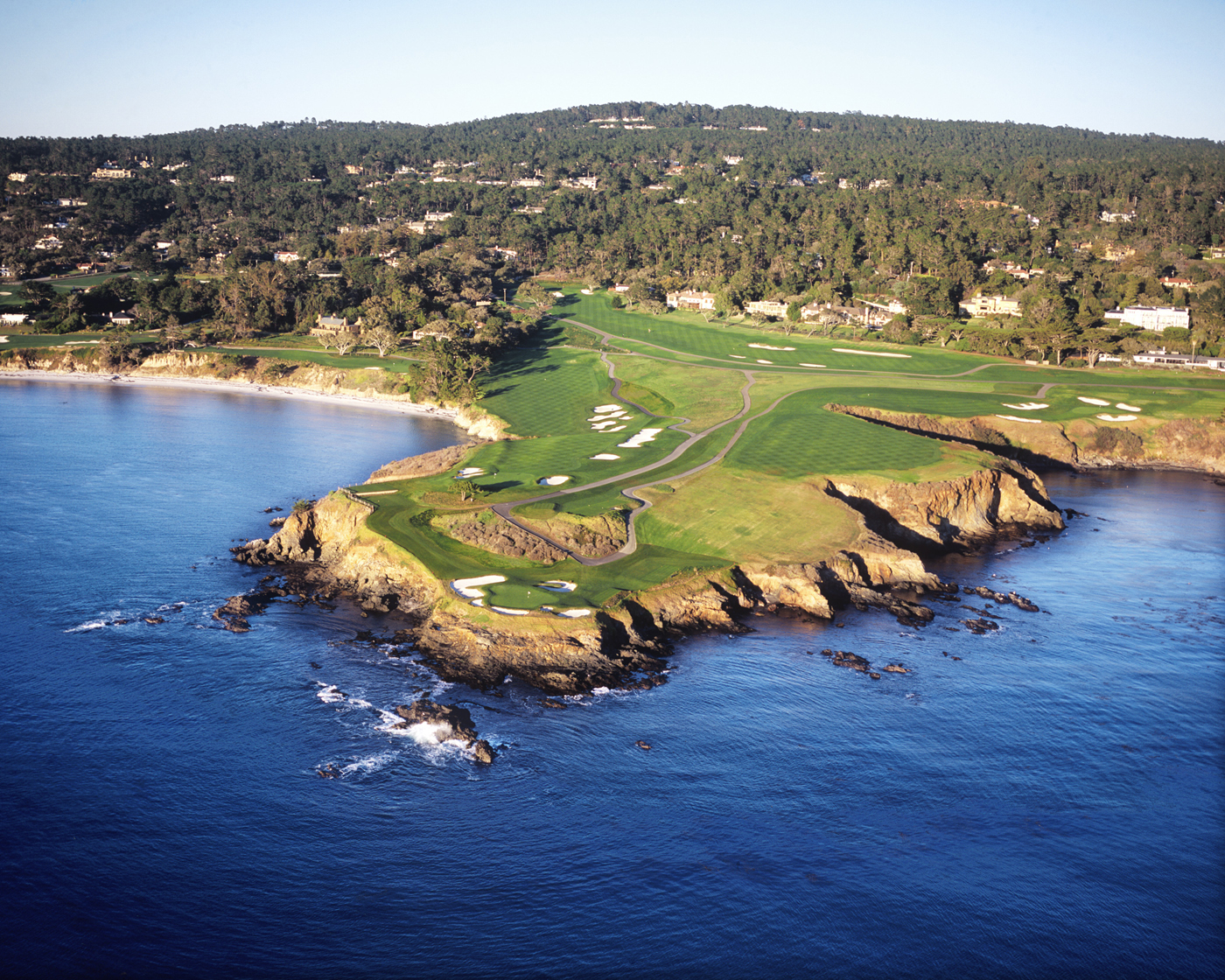
To get you started, here are our picks of the best PGA TOUR courses you can (and should!) play:
PGA Tour courses you can (and should) play
- Pebble Beach
- TPC Sawgrass – Stadium Course
- Arnold Palmer’s Bay Hill
- Torrey Pines – South
- Harbour Town
- PGA National – Champion
- Innisbrook Resort – Copperhead
Pebble Beach Golf Links (AT&T Pro-Am, U.S. Open, PGA Championship)
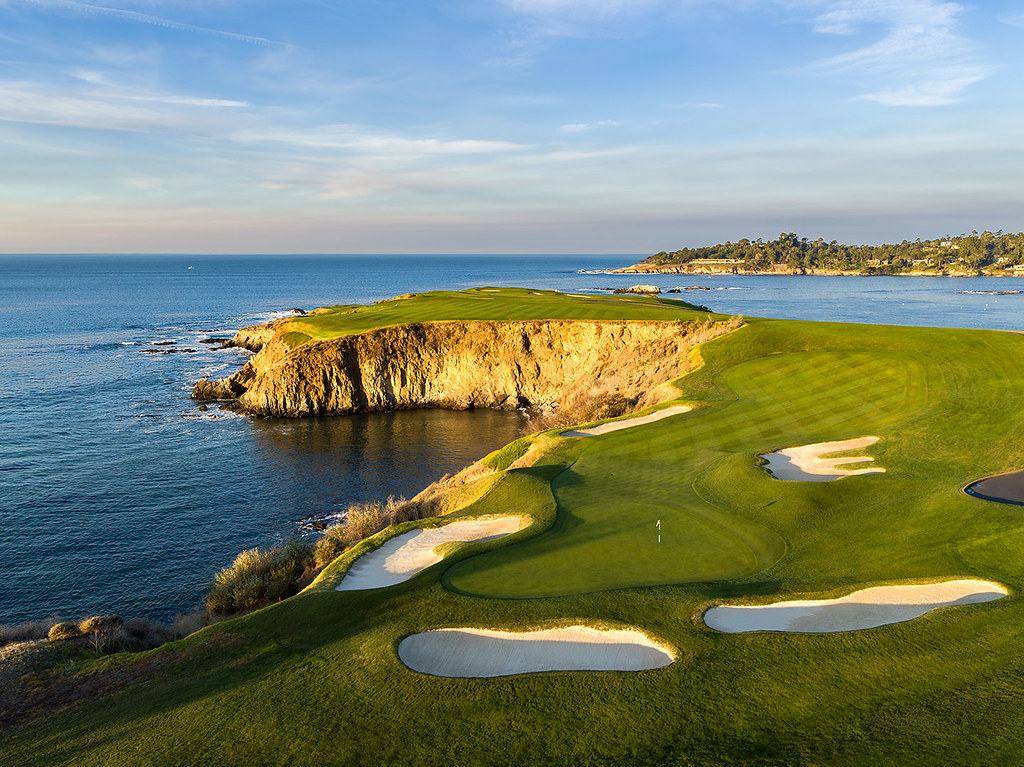
Early morning light on the par-4 8th hole at Pebble Beach Golf Links on the Monterey Peninsula.
One of the most recognizable golf courses in the world, Pebble Beach Golf Links is the definition of a bucket golf course. Golfers will play iconic holes like the par-3 7th to the stunning par-5 18th. Enjoy great views of the Pacific Ocean as you play amongst the clifftop fairways and make memories that will last a lifetime when you play this PGA TOUR and major championship course.
TPC Sawgrass – Stadium Course (THE PLAYERS Championship)
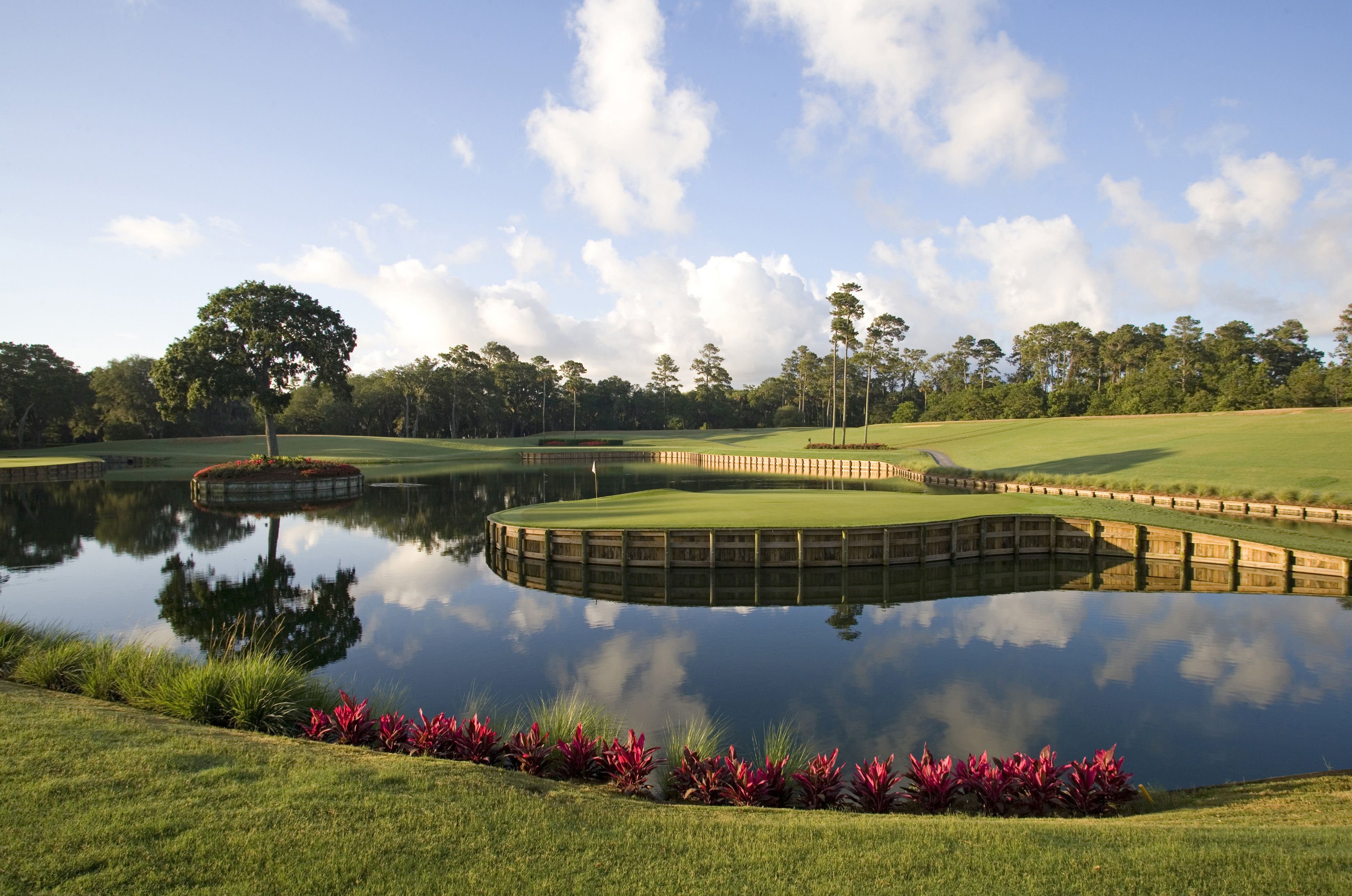
The 17th hole of THE PLAYERS Stadium Course at the TPC Sawgrass in Ponte Vedra Beach, FL Photo by: Chris Condon/PGA TOUR (Photo by Chris Condon/PGA)
Home to arguably the most famous par 3 in golf, the Stadium Course at TPC Sawgrass is a top bucket-list course designed by Pete and Alice Dye. A challenging layout awaits that will test all facets of your game, especially shot shaping and course management. Subtle elevation changes, undulating greens, and unique bunkering add a degree of difficulty that stump even the best players in the world. Not to mention one of the best finishing stretches in golf with the long par-5 16th, the iconic 17th hole island green, and the testy par-4 18th.
Arnold Palmer’s Bay Hill (Arnold Palmer Invitational)
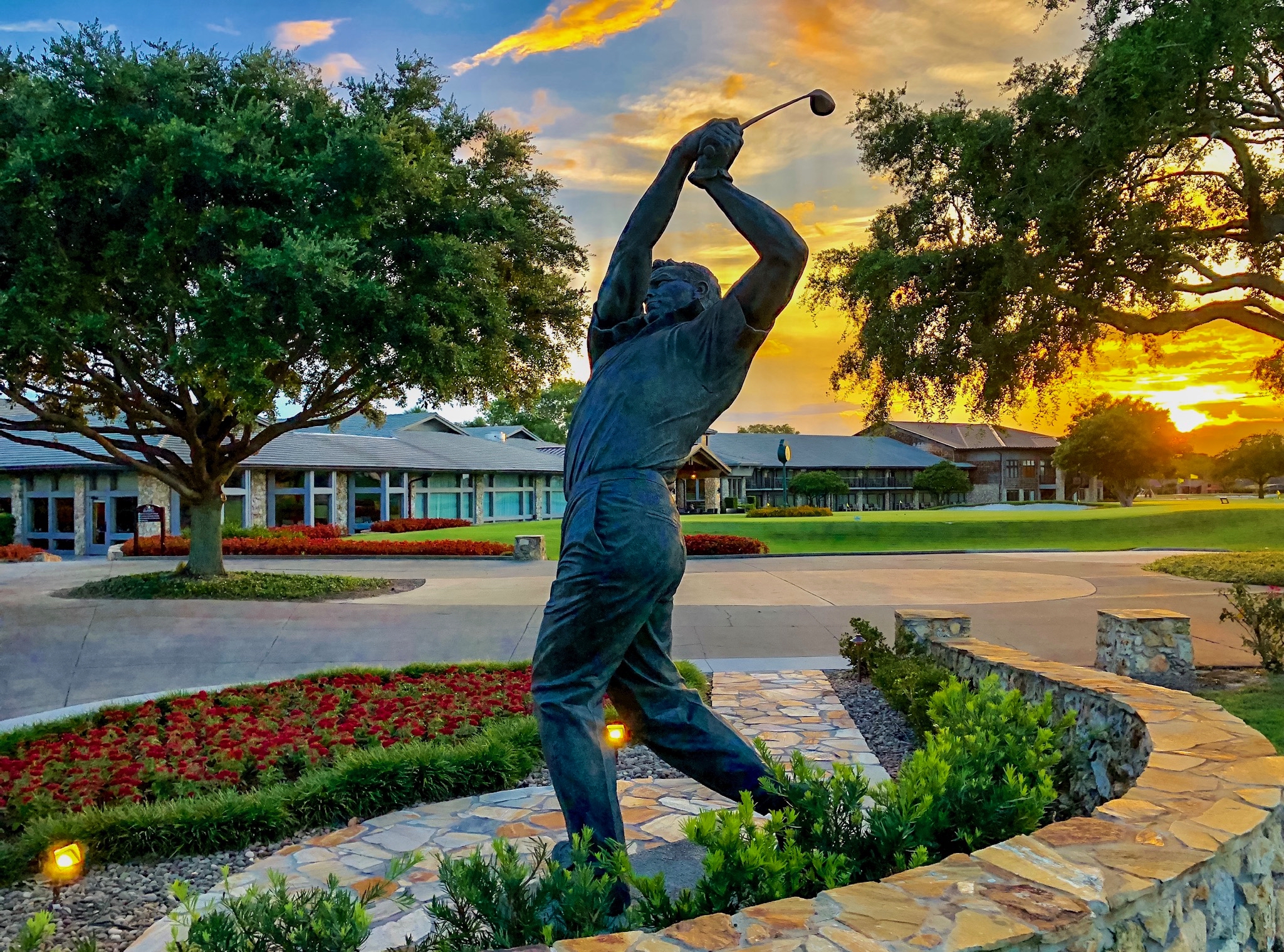
A course fit for “The King” is what you will experience when you visit Orlando and play Bay Hill’s Championship Course. This classic Florida layout offers generous landing areas off the tee with few trees, but bunkers guard the greens and large ponds will make you rethink your shot choices. The course is only available for members and guests staying at The Lodge, so a stay is required to play this stunning course. But with year-round sunshine and pristine course conditions, it is never a bad time to visit Bay Hill!
Torrey Pines – South (Farmers Insurance Open, U.S. Open)
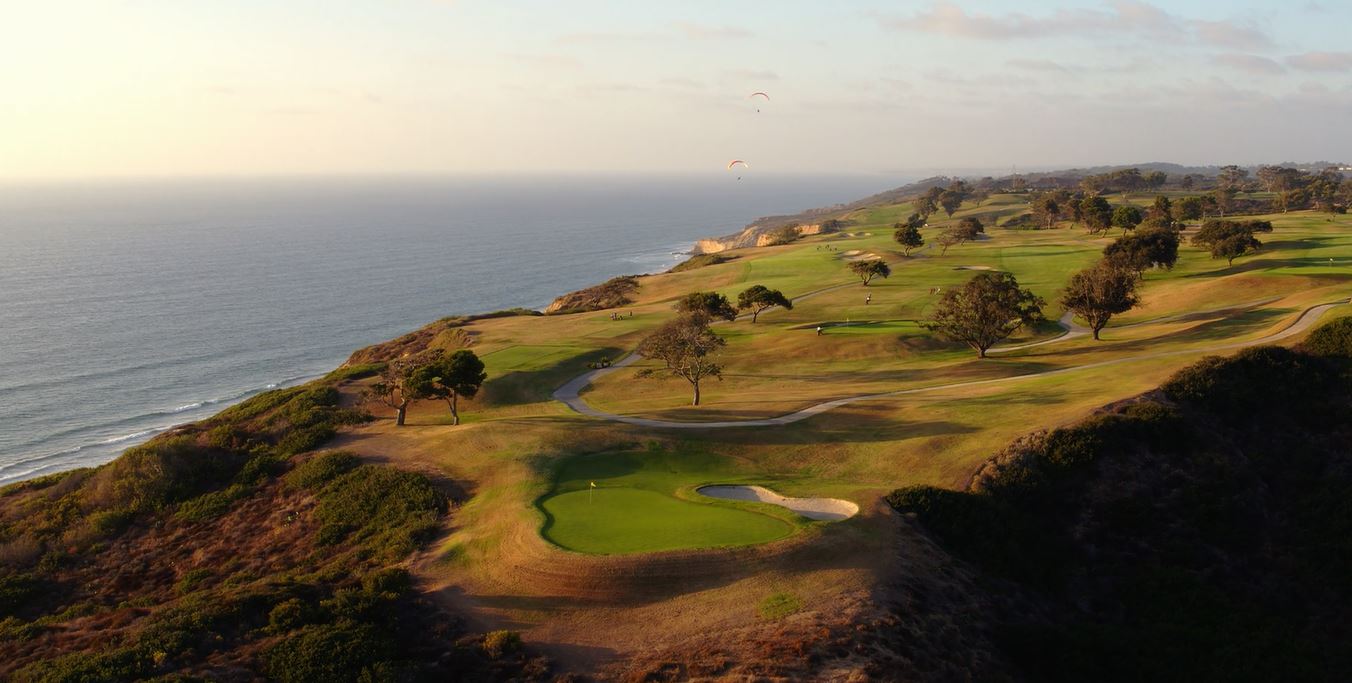
Another California clifftop course that should be on your bucket list is the South Course at Torrey Pines. Located just north of San Diego, this annual PGA TOUR stop has also hosted two U.S. Opens, which adds to the allure of the property. Narrow fairways and tall rough combined with amazing views of the Pacific Ocean and the California coastline make for an unforgettable round of golf. Large bunkers and elevation changes add to the challenge of the course, but the moderately sized greens offer golfers some respite. Who would’ve thought that a municipal course could be so exciting?

Hole 18 Harbour Town
Most recognized by the famous red and white striped lighthouse behind the 18th green, Harbour Town is the brainchild of Pete Dye and Jack Nicklaus on Hilton Head Island, South Carolina. While the course is relatively short for a PGA TOUR event, the challenging design offsets length for accuracy with the narrow fairways framed by overhanging trees making it a shot makers course. A majority of the course winds through the wooded and sandy terrain before looping back towards the coastline with the final two finishing holes playing along the water.
PGA National – Champion Course (Honda Classic, Ryder Cup, PGA Championship)
With the prominent golf tournaments this course has held, it is hard to leave it off the list. A fantastic Jack Nicklaus design, the Champions Course at PGA National is also home to a famous stretch of golf holes called “The Bear Trap.” The fairways and greens are player-friendly while the bunkers and water hazards are the course’s biggest defense. You will enjoy a 5-star experience and feel like a professional when you visit PGA National’s Champion Course.
Innisbrook Resort – Copperhead Course (Valspar Championship)
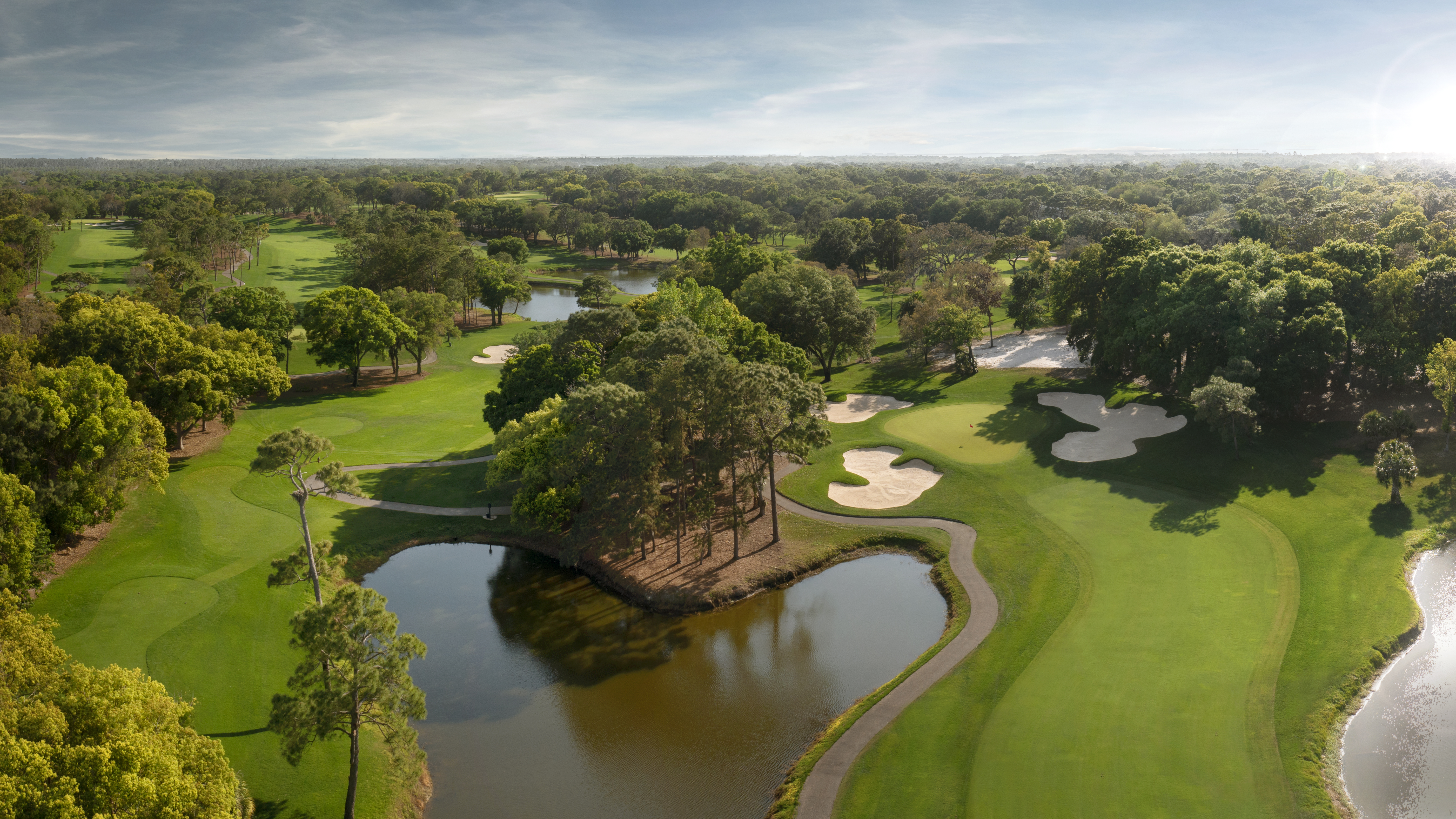
At more than 7,200 yards the Copperhead Course is the most recognizable of Innisbrook’s four Tampa, Florida courses and plays host to the PGA TOUR’s Valspar Championship.
One of the more under-the-radar courses on Tour, the Copperhead Course at Innisbrook Resort still offers a challenge even to the pros. Designed by Lawrence Packard, the course, while not heavily wooded, requires accuracy with tight fairways, strategically placed bunkers, especially around the greens, and a decent amount of water hazards that come into play. As you head towards the clubhouse, you will encounter “The Snake Pit;” a collection of the most difficult finishing holes on the PGA TOUR.
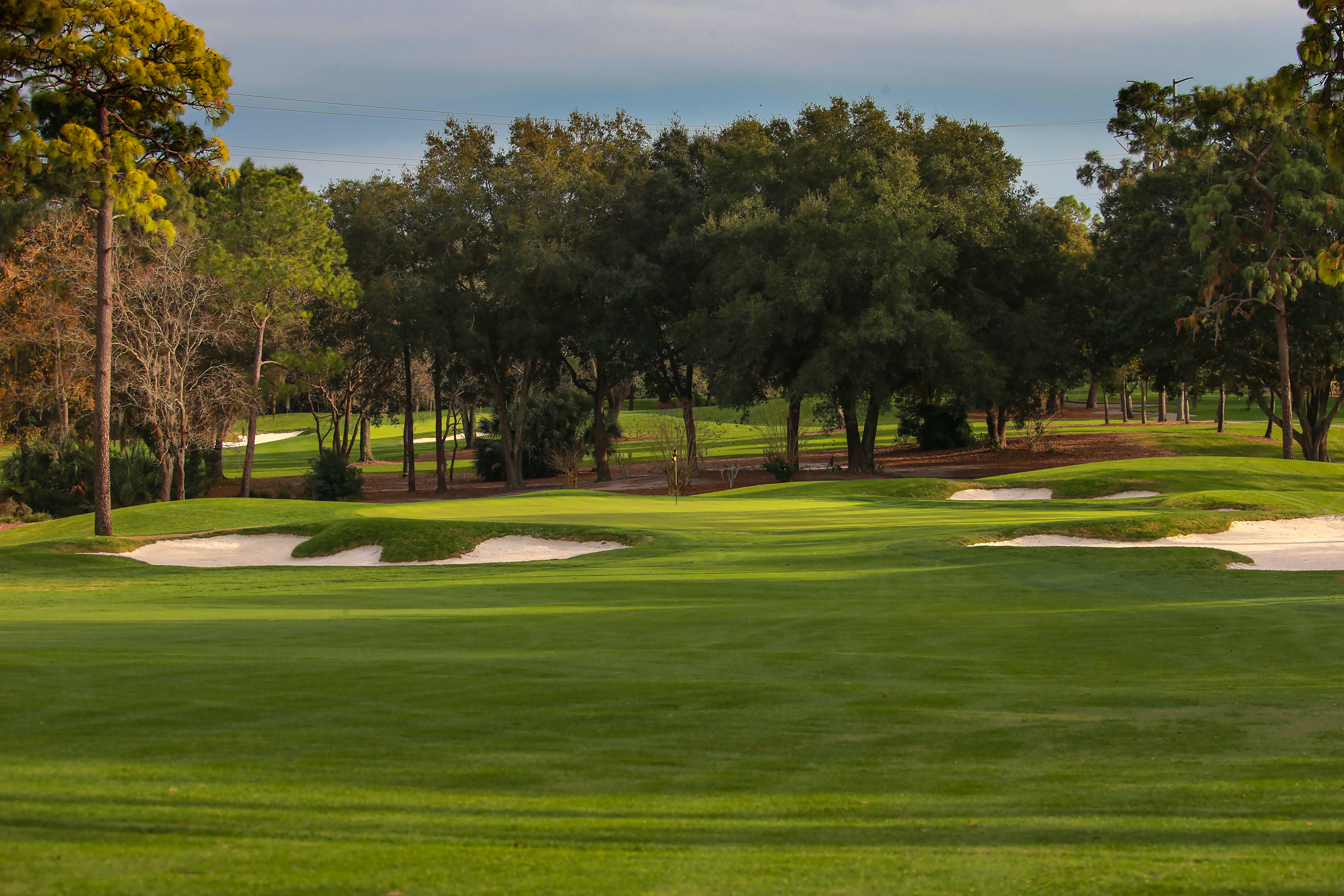
There you have it, GolfWRXers. Have you played any of these PGA TOUR tracks? What was your experience? Let us know in the comments.
Editor’s note: This article is presented in partnership with Golfbreaks. When you make a purchase through links in this article, GolfWRX may earn an affiliate commission.
- LIKE0
- LEGIT0
- WOW0
- LOL0
- IDHT0
- FLOP0
- OB0
- SHANK0
Instruction
The Wedge Guy: The easiest-to-learn golf basic

My golf learning began with this simple fact – if you don’t have a fundamentally sound hold on the golf club, it is practically impossible for your body to execute a fundamentally sound golf swing. I’m still a big believer that the golf swing is much easier to execute if you begin with the proper hold on the club.
As you might imagine, I come into contact with hundreds of golfers of all skill levels. And it is very rare to see a good player with a bad hold on the golf club. There are some exceptions, for sure, but they are very few and very far between, and they typically have beat so many balls with their poor grip that they’ve found a way to work around it.
The reality of biophysics is that the body moves only in certain ways – and the particulars of the way you hold the golf club can totally prevent a sound swing motion that allows the club to release properly through the impact zone. The wonderful thing is that anyone can learn how to put a fundamentally sound hold on the golf club, and you can practice it anywhere your hands are not otherwise engaged, like watching TV or just sitting and relaxing.
Whether you prefer an overlap, interlock or full-finger (not baseball!) grip on the club, the same fundamentals apply. Here are the major grip faults I see most often, in the order of the frequency:
Mis-aligned hands
By this I mean that the palms of the two hands are not parallel to each other. Too many golfers have a weak left hand and strong right, or vice versa. The easiest way to learn how to hold the club with your palms aligned properly is to grip a plain wooden ruler or yardstick. It forces the hands to align properly and shows you how that feels. If you grip and re-grip a yardstick several times, then grip a club, you’ll see that the learning curve is almost immediate.
The position of the grip in the upper/left hand
I also observe many golfers who have the butt of the grip too far into the heel pad of the upper hand (the left hand for right-handed players). It’s amazing how much easier it is to release the club through the ball if even 1/4-1/2″ of the butt is beyond the left heel pad. Try this yourself to see what I mean. Swing the club freely with just your left hand and notice the difference in its release from when you hold it at the end of the grip, versus gripping down even a half inch.
To help you really understand how this works, go to the range and hit shots with your five-iron gripped down a full inch to make the club the same length as your seven-iron. You will probably see an amazing shot shape difference, and likely not see as much distance loss as you would expect.
Too much lower (right) hand on the club
It seems like almost all golfers of 8-10 handicap or higher have the club too far into the palm of the lower hand, because that feels “good” if you are trying to control the path of the clubhead to the ball. But the golf swing is not an effort to hit at the ball – it is a swing of the club. The proper hold on the club has the grip underneath the pad at the base of the fingers. This will likely feel “weak” to you — like you cannot control the club like that. EXACTLY. You should not be trying to control the club with your lower/master hand.
Gripping too tightly
Nearly all golfers hold the club too tightly, which tenses up the forearms and prevents a proper release of the club through impact. In order for the club to move back and through properly, you must feel that the club is controlled by the last three fingers of the upper hand, and the middle two fingers of the lower hand. If you engage your thumbs and forefingers in “holding” the club, the result will almost always be a grip that is too tight. Try this for yourself. Hold the club in your upper hand only, and squeeze firmly with just the last three fingers, with the forefinger and thumb off the club entirely. You have good control, but your forearms are not tense. Then begin to squeeze down with your thumb and forefinger and observe the tensing of the entire forearm. This is the way we are made, so the key to preventing tenseness in the arms is to hold the club very lightly with the “pinchers” — the thumbs and forefingers.
So, those are what I believe are the four fundamentals of a good grip. Anyone can learn them in their home or office very quickly. There is no easier way to improve your ball striking consistency and add distance than giving more attention to the way you hold the golf club.
More from the Wedge Guy
- The Wedge Guy: Golf mastery begins with your wedge game
- The Wedge Guy: Why golf is 20 times harder than brain surgery
- The Wedge Guy: Musings on the golf ball rollback
- LIKE83
- LEGIT13
- WOW5
- LOL1
- IDHT0
- FLOP4
- OB1
- SHANK8
-

 19th Hole2 weeks ago
19th Hole2 weeks agoJohn Daly stuns fans into silence with brutal opening tee shot on PGA Tour Champions
-

 19th Hole7 days ago
19th Hole7 days agoThings got heated at the Houston Open between Tony Finau and Alejandro Tosti. Here’s why
-

 19th Hole4 days ago
19th Hole4 days agoReport: Tiger Woods has ‘eliminated sex’ in preparation for the 2024 Masters
-

 19th Hole3 weeks ago
19th Hole3 weeks ago2-time major champ announces shock retirement from the sport at age of 33
-

 19th Hole3 weeks ago
19th Hole3 weeks agoEdoardo Molinari reveals the latest PGA Tour golfer to turn down ‘good offer’ from LIV Golf
-

 19th Hole2 weeks ago
19th Hole2 weeks agoCharlie Woods finds it tough going on American Junior Golf Association debut
-

 19th Hole3 weeks ago
19th Hole3 weeks agoScottie Scheffler had an interesting response when asked how he ‘quiets the noise’ following Players victory
-

 19th Hole6 days ago
19th Hole6 days agoAddiction, spinal fusion, and scam artists – Everything Anthony Kim revealed in candid interview with David Feherty



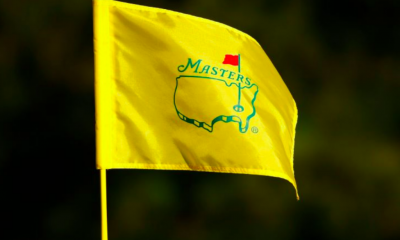



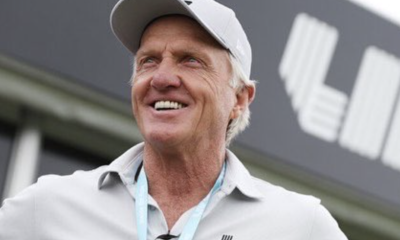

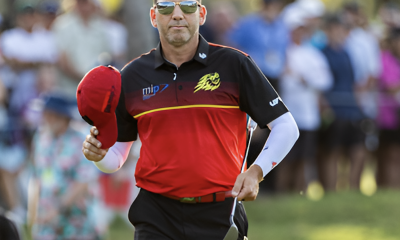



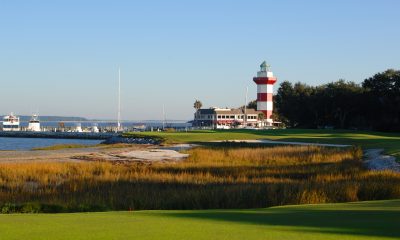













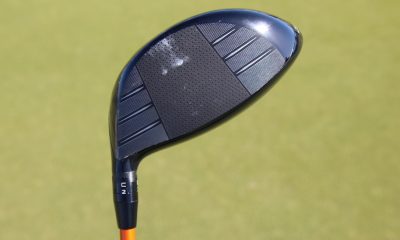



15th Club
Jun 1, 2019 at 11:54 am
Actually, the DGC SOUTH Course is the “Donald Ross Gem.” Because it is a short, Par 68, it has been overlooked by the tournament preppers and it remains one of the best examples of Ross architecture in the Midwest. It is a delight to play. If I were invited tomorrow to play at DGC, I’d be interested in playing the North Course just to see how firm and fast they have gotten it for a Tour event. But most of the time when I have been invited to play DGC, I have asked if we could play the South Course.
The DGC North Course is still Ross routing, but not much else. They’ve tampered with the greens and the bunkering about a dozen times in more or less consequential ways. It is a course that has been made to work for modern/technological distances as best as can be hoped with limited geography.